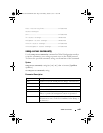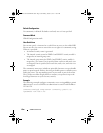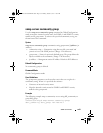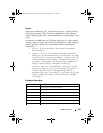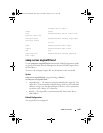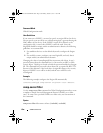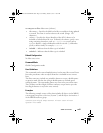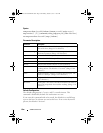
1536 SNMP Commands
Command Mode
Global Configuration mode
User Guidelines
If you want to use SNMPv3, you need to specify an engine ID for the device.
You can specify your own ID or use a default string that is generated using the
MAC address of the device. If the SNMPv3 engine ID is deleted, or the
configuration file is erased, then SNMPv3 cannot be used. Since the
EngineID should be unique within an administrative domain, the following
guidelines are recommended:
1
For standalone devices use the default keyword to configure the Engine
ID.
2
For stackable systems, configure your own EngineID, and verify that is
unique within your administrative domain.
Changing the value of snmpEngineID has important side-effects. A user's
password (entered on the command line) is converted to an MD5 or SHA
security digest. This digest is based on both the password and the local engine
ID. The command line password is then destroyed, as required by RFC 2274.
Because of this deletion, if the local value of engineID changes, the security
digests of SNMPv3 users will be invalid, and the users will have to be
reconfigured.
Example
The following example configures the Engine ID automatically.
console(config)# snmp-server engineID local default
snmp-server filter
Use the snmp-server filter command in Global Configuration mode to create
or update a Simple Network Management Protocol (SNMP) server filter
entry. To remove the specified SNMP server filter entry, use the no form of
this command.
Syntax
snmp-server filter
filter-name oid-tree
{included | excluded}
2CSPC4.XCT-SWUM2XX1.book Page 1536 Monday, October 3, 2011 11:05 AM




